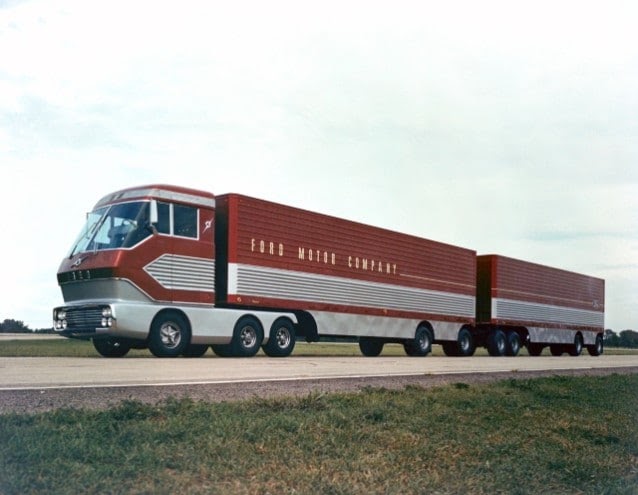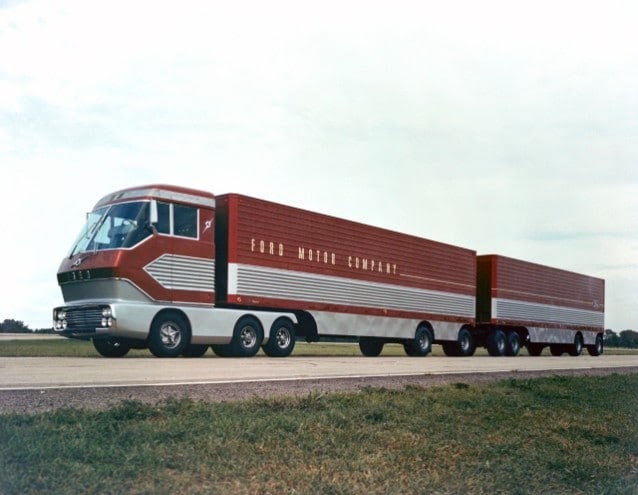 1964 Ford Big Red Gas Turbine Truck. Credit: Ford. Here�s a truck you may not know ever existed. It�s Ford�s 1964 �Big Red� Turbine truck - a truck with a turbine engine in it. The super transport prototype, built in �64, was recently found more than thirty years after it�s last sighting. It�s unique due to its turbine engine. While they are quite common in military tanks, helicopters and jet airliners, their use in production automobiles has been quite limited. Ford says it did however dedicate approximately two decades of research beginning in the 1950s to making that a possibility. �Big Red� is possibly the largest example of the company�s efforts. The 600-horsepower experimental truck made several cross-country trips to demonstrate the comparable cost of operation to a traditional diesel engine. The 13-foot-tall truck was built as a result of a pact with the U.S. Department of Defense. A subsequent version intended specifically for commercial application was created in 1966. Other Ford-built turbine engines were tested in a bus used for cross-country routes as well as in a fleet used to move Ford parts between Michigan and Ohio. The Ford-built turbine engines and vehicles offered the advantages of making less noise � Big Red was described as �scarcely audible to the motorist� in a promotional brochure � and less vibration, produced fewer emissions, used less oil and produced high torque and lower speeds. Company researchers had narrowed their focus to turbine use in large trucks.  The turbines� high operating speed and temperature would ultimately make the engines unfeasible for automotive use, though. So, after nearly 20 years of research, Ford began producing turbine-powered engines for heavy truck, bus, industrial and marine use in 1970, but supplier and technical issues ultimately killed Ford�s hopes for a turbine-producing venture in 1973. The company�s research on materials such as ceramics and high-temperature coatings did, however, prove useful in controlling emissions in the decades since. |
|
|
|
